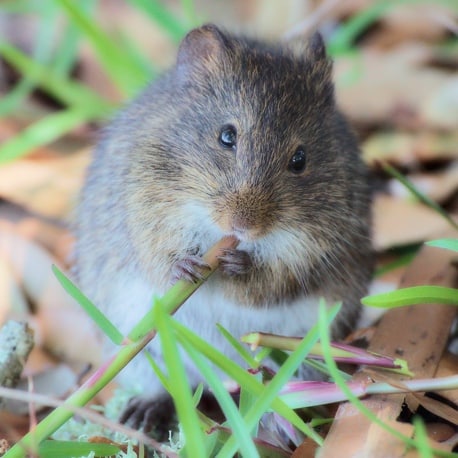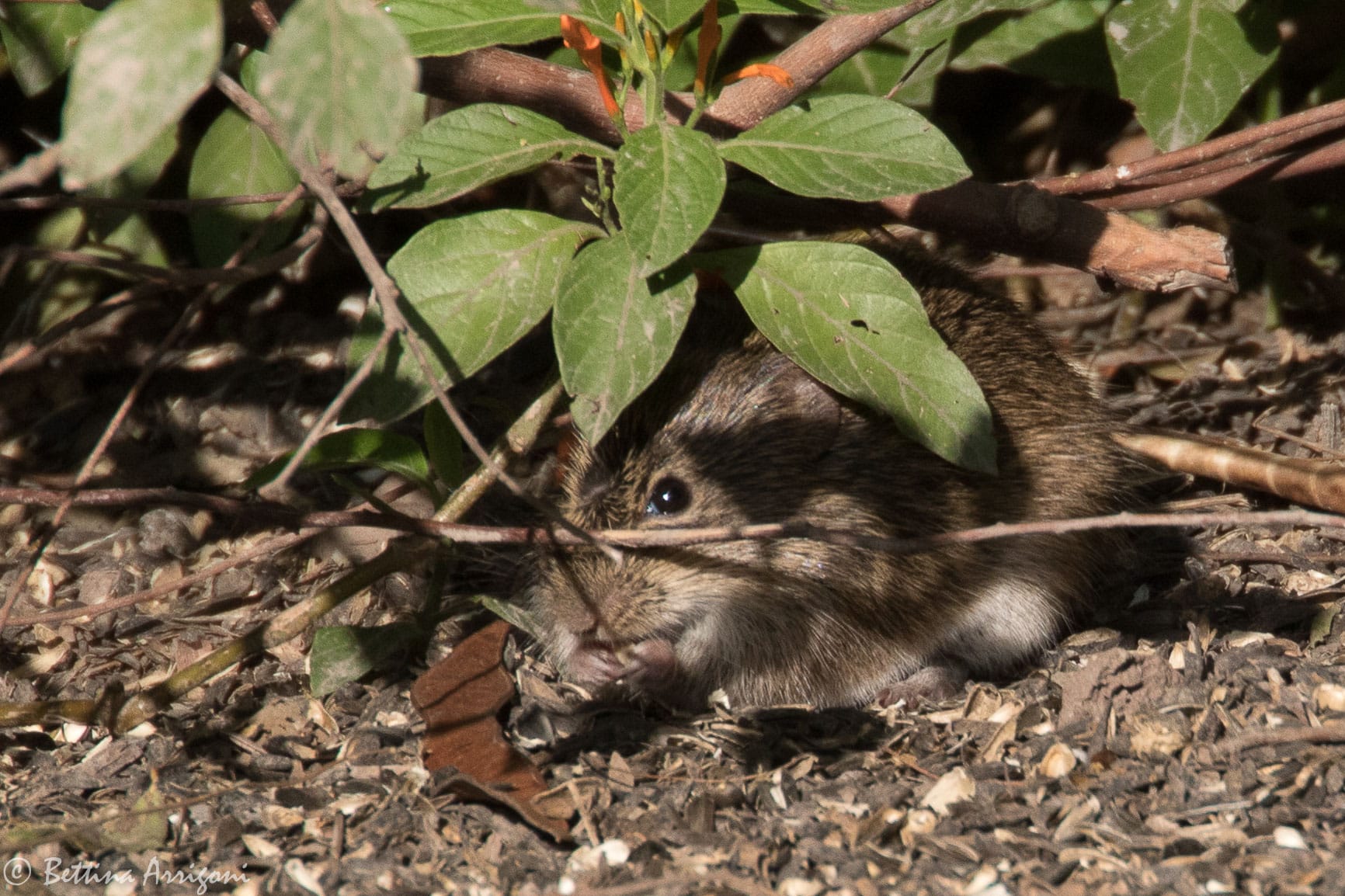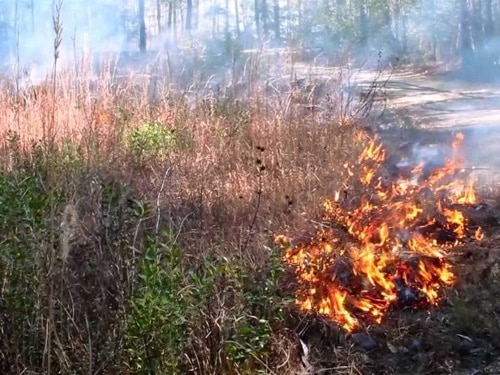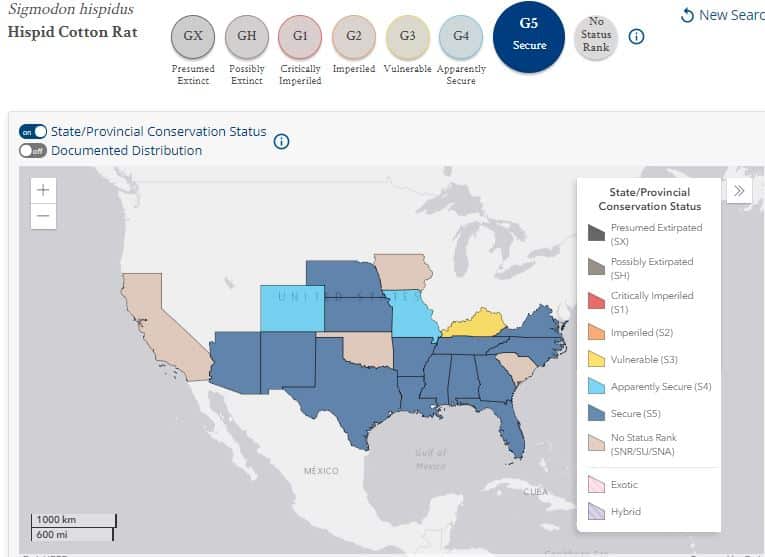Hispid Cotton Rat
Sigmodon hispidus
Status: Secure
Hispid Cotton Rats are small rodents with long coarse fur and have a tail shorter than the length of their body. They are about 8 to 14 inches in length. The fur of these cotton rats is a mix of tan, gray, and black with a grayish or buff underside. The tails of these cotton rats are dark on the top and light underneath. Depending on the region, the colors of the hispid cotton rats will vary.


Habitat & Range
Hispid cotton rats are found in many regions in North and South America. In the U.S. these cotton rats have been distributed as far west to Nebraska and as far east as Virginia. The hispid cotton rats are commonly seen in dense grassy fields or open fields.
Food Web & Energy Flow
Hispid cotton rats mostly eat stems, leaves, roots, seeds and sometimes young birds or insects. They are secondary consumers and omnivores.
Relationship to Fire
Hispid cotton rats are nocturnal which means they are active at night. During the day, these cotton rats use the vegetation for protection and shelter. They need frequent fires in the area to keep the understory growing. Without the understory, they can be easily seen by predators which can cause their population to decline.

Conservation Status
The overall conservation status for Hispid cotton rats is Secure. Although their population is not currently under a major threat, they are still experiencing habitat loss.

Human Impacts/ Threats

Fire Suppression
Many people think of fires in the forest as bad, so they work hard to prevent or suppress them. But longleaf forests NEED regular fire to support habitat for the species that live there!

Land Use Conversion
Longleaf forests and the habitat it supports is being cleared or converted to use the land for other uses like houses, roads, agriculture, and even to grow different types of trees to sell.
Resources
Tennessee Wildlife Resources Agency. Hispid Cotton Rat
Animal Diversity Web. All about Hispid
Texas Tech University. Natural Science Research Laboratory
